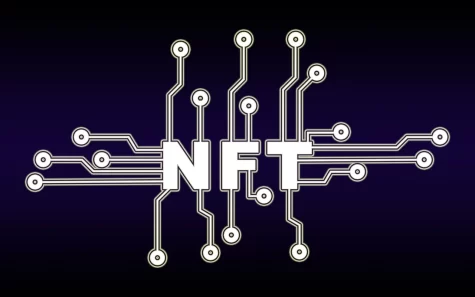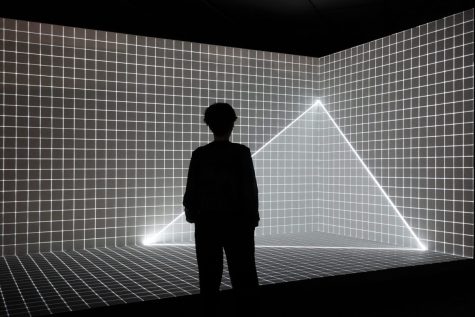How do NFTs Affect the Environment?
Bitcoin mining, on its own, produces 38 million tonnes of CO2 per year. Slovakia’s carbon footprint is closer to 37 million tonnes of carbon dioxide emissions per year. Furthermore, bitcoin releases so much carbon dioxide in a single day, the carbon footprint of bitcoin is equivalent to watching 57,000 Youtube videos. To think that a digital currency is producing more carbon dioxide than a literal, physical country doesn’t sit right with me.
The reason bitcoin makes so many emissions is, in order for a miner to successfully mine a bitcoin, they must compete against other miners to solve “blocks” of verified transactions. These blocks, after they are verified, are added to something called the blockchain. The first person to solve one of these puzzles receives mining rewards, and the more power and computers that a miner uses to mine bitcoins is proportional to the probability of mining the bitcoin. Mining bitcoin is a head-to-head battle against millions of bitcoin miners, all trying to mine the same thing. Because of the traffic in bitcoin mining, computers that try billions of computations per second are needed if you ever want to have a chance at mining a bitcoin.
 NFTs, or Non-Fungible Tokens, are pieces of artwork that people can make and then sell online, similar to regular physical art. However, in order to buy an NFT, it uses the same process as bitcoin to authenticate transactions. On the blockchain, there are multiple transactions that need to be verified: firstly, to create the NFT, secondly, for people to bid on the NFT, thirdly, so that after winning the NFT, your transaction can be authenticated, and lastly, to transfer ownership. Since there are so many blocks on the blockchain, the number of carbon emissions released during this whole entire process is dumbfounding. More often than not, a single NFT is bought and sold repeatedly on the same blockchain, so the more that blocks are added onto the blockchain, the more carbon emissions are released for that single piece of online art. Now that NFT’s are growing in popularity, people are making more money off of NFT’s and so the cycle continues.
NFTs, or Non-Fungible Tokens, are pieces of artwork that people can make and then sell online, similar to regular physical art. However, in order to buy an NFT, it uses the same process as bitcoin to authenticate transactions. On the blockchain, there are multiple transactions that need to be verified: firstly, to create the NFT, secondly, for people to bid on the NFT, thirdly, so that after winning the NFT, your transaction can be authenticated, and lastly, to transfer ownership. Since there are so many blocks on the blockchain, the number of carbon emissions released during this whole entire process is dumbfounding. More often than not, a single NFT is bought and sold repeatedly on the same blockchain, so the more that blocks are added onto the blockchain, the more carbon emissions are released for that single piece of online art. Now that NFT’s are growing in popularity, people are making more money off of NFT’s and so the cycle continues.
During the transactions, computer chips are being burned out quicker than ever, and in order to produce the actual hardware to produce the computers, a source of fuel is needed. So, deforestation occurs.
 As for an actual example of where this happened, take a look at famous French artist Joanie Lemercier. Lemercier, known for his illusion-like sculptures that change due to light, started making NFTs. His first release was a blockchain that contained six NFTs. These NFTs sold out in a grand total of ten seconds and consequently used up a total of 8.7 megawatt-hours of energy. That amount of energy was the amount of energy Lemarcier used in two years in his studio. However, Lemercier thought that the carbon footprint was behind him, and he and fellow artists were becoming millionaires in a matter of seconds. Another large problem was that the sites that were selling NFTs weren’t educating people about their environmental consequences, so most users didn’t/don’t know about the amount of carbon that their online monkey jpg was creating. Another example of NFTs selling for large amounts of money is the infamous Nyan-Cat, who sold for $660,000. People on social media are making thousands of dollars for their art online, and other people are producing videos on how to make NFTs and produce a lot of money.
As for an actual example of where this happened, take a look at famous French artist Joanie Lemercier. Lemercier, known for his illusion-like sculptures that change due to light, started making NFTs. His first release was a blockchain that contained six NFTs. These NFTs sold out in a grand total of ten seconds and consequently used up a total of 8.7 megawatt-hours of energy. That amount of energy was the amount of energy Lemarcier used in two years in his studio. However, Lemercier thought that the carbon footprint was behind him, and he and fellow artists were becoming millionaires in a matter of seconds. Another large problem was that the sites that were selling NFTs weren’t educating people about their environmental consequences, so most users didn’t/don’t know about the amount of carbon that their online monkey jpg was creating. Another example of NFTs selling for large amounts of money is the infamous Nyan-Cat, who sold for $660,000. People on social media are making thousands of dollars for their art online, and other people are producing videos on how to make NFTs and produce a lot of money.
Now, I know that some readers are thinking “Well, what if I screenshot the NFT? Then won’t I own the NFT?” The answer is simply “No.” Think of it as a piece of physical art, for instance, the Mona Lisa. Buying a fake of the Mona Lisa doesn’t have the same value as the original Mona Lisa. It’s the same thing for NFTs. With every NFT that is bought, a token is also bought with it, and this token provides digital evidence that the art is theirs.

Aarav Gedala is a junior at Keystone School who is interested in writing about a variety of topics, including fashion and health.

